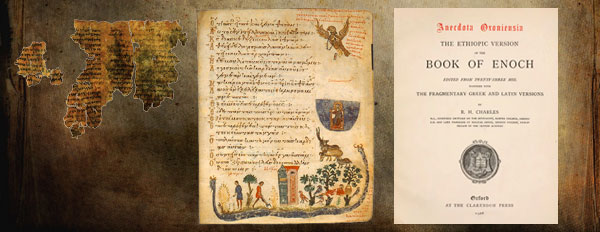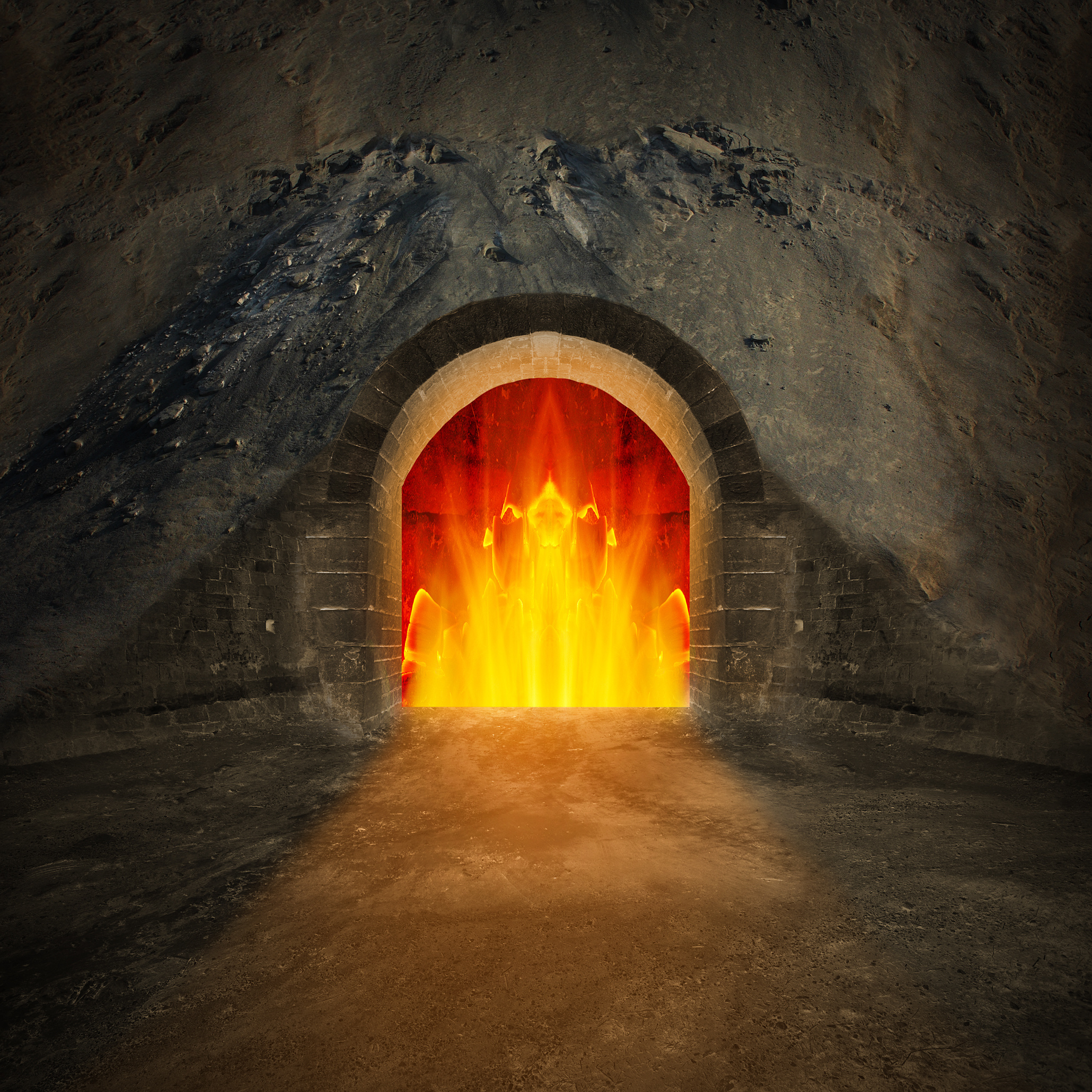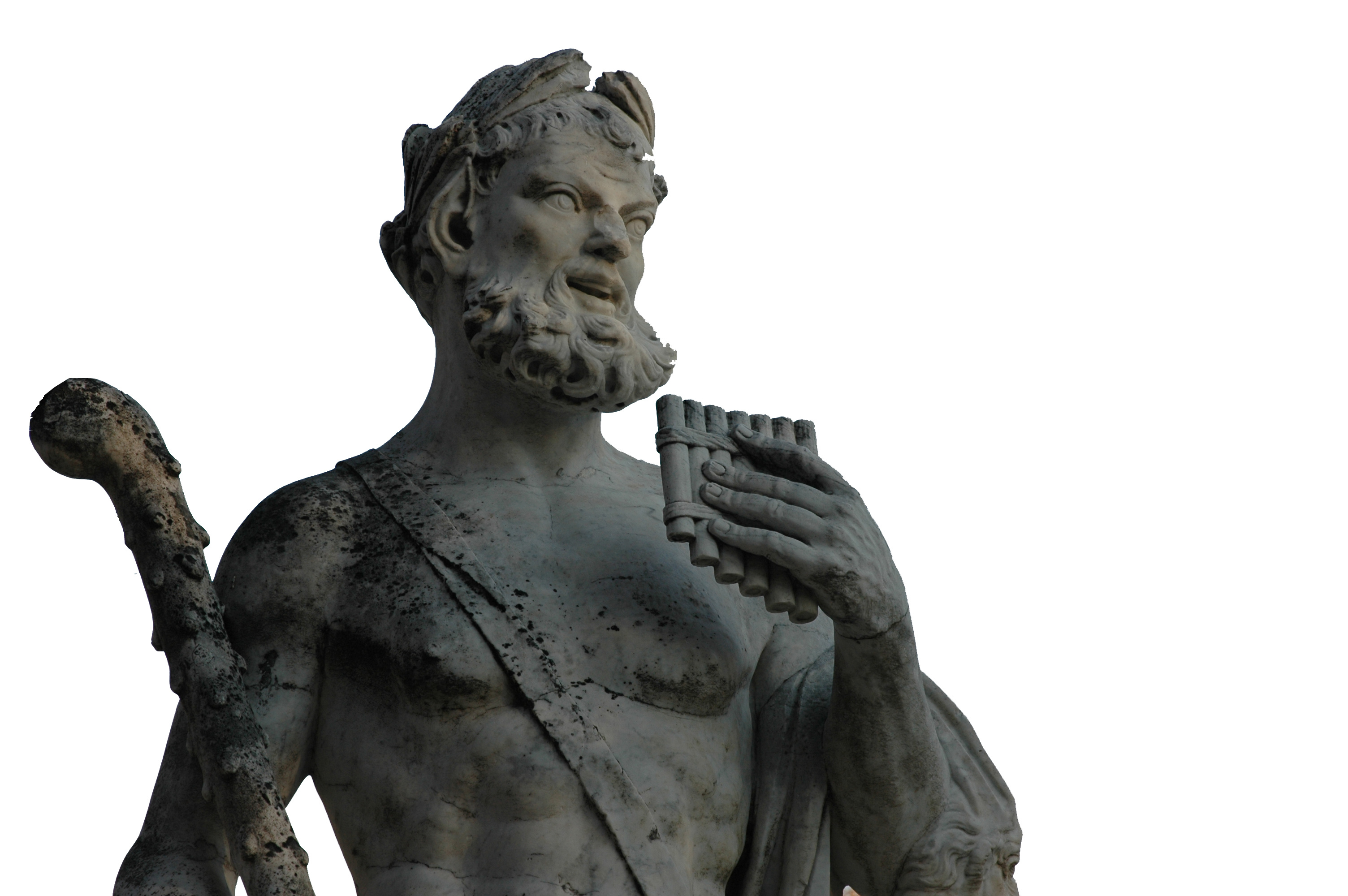There is a curious fascination among many Hebraic minded people to seek for truth and hidden knowledge outside of the Bible. This has led many people to delve into many extra-biblical books such as the Dead Sea scrolls, the Book of Enoch, the Apocrypha and other intertestamental writings, and rabbinic Jewish writings including the Talmud and Zohar. What are we to make of these writings, and how do we evaluate truth from error? This video presents some guidelines to follow in separating the wheat of truth from the chaff of humanistic mythologies and the dead end spiritual paths found in many extra-biblical books.
Tag Archives: Book of Enoch
What about the book of First Enoch?

In the comments section of this blog, one of our readers asked an excellent question that I asked myself for years.
I’m having trouble taking Enoch 1 seriously. Is there some compelling evidence that makes it seem to be authentic?
Here is my answer just for Coleen, and hopefully you’ll find it enlightening as well.
The Book of First Enoch Validated with Cautions
I appreciate your concerns about the book of First Enoch and am happy to address them. For many years, I was extremely skeptical about its authenticity, and have even expressed these reservations in times past on this blog. However, when I’m not sure about something, I try to keep an open mind realizing that new information on a subject may change my understanding of it. This has been the case with the book of First Enoch. Let me briefly explain.
There are a whole boatload of folks out there in the Biblical truth restoration movement who have a little information, have done a little study on a subject for several years, and because of easy access to mass audiences on the internet and through social media, they put out a whole plethora of ideas about anything and everything. Because they may know a little more than the next guy, who is tuning in for the first time, they’re perceived as being experts. A third grader is an expert in the eyes a first grader. But now where is that same third grader when placed up against a person who has a doctorate on that same subject? Sadly, we have a lot of third graders running around trying to teach us a lot of things about subjects they know little or nothing about. This includes the book of First Enoch.
With regard to the book of First Enoch, let me confess that I’m not an expert. I’m the third grader in the room on this subject. But as Henry Ford once said when challenged about his lack of formal education, “I may not be the smartest, but I can hire the smartest to work for me.” In my case, I can read what the experts scholars have to say on the subject of First Enoch, and as well-exercised biblical lay scholar, researcher, prolific writer and teacher for decades, hopefully by now I can get to the truth of a matter.
Continue readingThe Spirits in Prison and Its Relationship to Baptism
1 Peter 3:19–22, Preached to the spirits in prison. Did Yeshua preach to the spirits in prison while he was dead? No. Verse 18 states that Yeshua was put to death, was then quickened or made alive by the Spirit (i.e. was resurrected from the grave), and then, in the spirit, he went to preach to the spirits in prison. From the context of this passage, we learn that Yeshua preached to the angelic spirits who rebelled in Noah’s time after he was resurrected from the dead. In this place of restraint, which Peter refers to as tartaroo (2 Pet 2:4 cp. Jude 6) and which in the ancient near east world referred to a subterranean or underworld prison, these evil spirits await Elohim’s final judgment (Jude 6).
Likely, Yeshua went there to inform these evil spirits that despite his resurrections and offering of salvation for human sinners, there is no redemption for these fallen demonic spirits because of the evil deeds they committed as recorded in Gen 6:2–4. Interestingly, the ancient Book of 1 Enoch gives us some additional background information that these same demons appealed their sentence in times past, but to no avail (1 Enoch 6:4; 13:12–3; 14:4–5).
This passage in First Peter ends in verse 22 with Yeshua taking his position victoriously at the right hand of Elohim above angels, principalities and powers. In other words, Yeshua has overcome all the rebellious plans and machinations of Satan and his evil demonic spirits to subvert Elohim’s plan of redemption for man. The end result of YHVH’s plan of salvation for man will be the glorification and exaltation of man at Yeshua’s second coming to a position above the angelic realm (Heb 2:6–7 cp. 1 Cor 6:3), which is something that Satan attempted to prevent through his attempted subversion of the human race and the thwarting of Elohim’s plan of salvation of man as recorded in Gen 6:2–4. By Yeshua’s resurrection and his victory over sin, death, hell, the grave and Satan, he has defeated all the enemy’s plans. Through our acceptance of and identification with Yeshua’s death, burial and resurrection through the spiritual ritual of baptism for the remission of sins (1 Pet 3:21), we have access to this glorious victory over evil and the potential to become the glorified children of Elohim (John 1:12; Rom 8:14–15; 23; 9:4; 2 Cor 6:18; Gal 4:5–6; Eph 1:5; 1 John 3:1–2; Rev 21:7).
Prison. (Gr. phulake) There are no instances in the Bible of disobedient human souls being placed in an other-worldly prison (Gr. phulake). On the other hand, Satan is bound in a prison (Gr. phulake) for a thousand years during the millennium (Rev 20:7).
1 Peter 3:19, Baptism. This passage is equating baptism with a pledge of loyalty to the risen Savior. In the cosmic struggle between good and evil, between Satan and Elohim as specifically noted in the larger context of this passage as regards the sins of the angelic “sons of Elohim” in Gen 6:2, baptism is the public oath a new believer takes in favor of Elohim and against Satan. This is why the baptism ritual in the early Christian church included a renunciation of Satan (and his minions) and involved literally turning one’s back on the setting sun and facing the rising sun. This wasn’t an act of sun worship, but an acknowledgement of Yeshua, the Creator of the sun who is the Sun of Righteousness (Mal 4:2) and whose face shines like the sun (Rev 1:16) and who is the spiritual light of the world (John 8:12; 1:1–9), and who came to dispel the spiritual darkness (John 1:1–9) introduced into this world by Satan at the tree of knowledge (Gen 3) and by those angels that rebelled against Elohim and attempted to corrupt humanity both physically and spiritually (Gen 6:1–6; Jude 6; 2 Pet 2:4).
On the Origin of Demons
Matthew 17:21, This kind [of demon]. There are different kinds of demons that influence humans. The Testimony of Yeshua speaks of being “possessed with a demon” or “demons,” “vexed with a demon,” or “severely possessed with a demon” (Matt 4:24; 8:16, 28, 33; 9:32; 12:22; 15:22; Mark 1:32; 5:15, 16, 18; Luke 8:36; John 10:21).
All these ideas are expressed by the Greek word daimonizomai meaning “to be under the power of or possessed by a demon, or demonized.”
There are levels of demonization. The Bible reveals that demons can influence humans (e.g. from fiery darts of Satan shot at the saints by which he attempts to influence them [Eph 6:16], by lying to humans [1 Kgs 22:22–23], through unclean spirits [e.g. Matt 12:43; Mark 1:23, 26; 3:30] and by literally living in or possessing a person. The latter is the most extreme form of demonization.
In this passage, a demon lived inside of a child (v. 18), and when Yeshua rebuked the demon, it came out of the child. When a person is possessed with a demon, prayer and fasting may be necessary on the part of the deliverer to cast out the demon. This is because the deliverer has, to one degree or another, himself been weakened spiritually by faithlessness and perverseness and therefore lacks the spiritual power and faith to cast out the demon (vv. 17, 22), or because he has been negatively influenced by those around him who are this way (v. 17), and thus has been weakened by his spiritual environment. This is why Yeshua, at times, had to put the spiritually weak and faithless people out of the room before healing a sick person (Mark 5:40).
Prayer and fasting energizes a person spiritually by afflicting the soul (the mind, will and emotions) and forcing it into conformity with the word, will and Spirit of Elohim through which one gains the spiritual power to accomplish supernatural feats such as casting out demons.
When Yeshua speaks of “this kind” of demon (v. 18). What did he mean? What kind of demon? The Bible reveals that there are various levels and types of evil, satanic spirits (e.g. Eph 6:12). The Book of 1 Enoch teaches and second temple Jewish sages based on this that demons were the disembodied spirits of the nephilim (see Gen 6:2–4), who after their human bodies died continued to live (as ghost-like figures) roaming in search of a body (human or animal) or object to possess (1 Enoch 15:8–10). This may be what Yeshua is referring to here.
With regard to the origin of demons, the 1906 Jewish Encyclopedia under the articles entitles “Demonology” states,
The speculation regarding the nature and origin of these demons and their leaders led as early as the second pre-Christian century, in those fragments preserved under the name of the Book of Enoch, to the story of the fall of the angels (Enoch, vii.-viii.; lxix.). Like Beelzebub, or Lucifer (Isa. xiv. 12; compare Slavonic Enoch, xxix. 4), two hundred ‘Irin or “watchers” fell, attracted by the beauty of the daughters of men (Gen. vi. 4); only tradition obviously differed as to the leader of the rebellious host, whether it was Azazel or Shamazai. At any rate, they acknowledged the supremacy of Satan (liii. 3, liv. 6), though occasionally many satans are mentioned (xl. 7 et al.), and these fallen angels became “the evil spirits” (xv. 8, xix. 19) who taught mankind all the arts of deception, witchcraft, and sin (vii.-viii., lxix.). But their children, the offspring of this mixture of an earthly and a celestial race, became, when slain, the hybrid race of disembodiedspirits or demons doing the work of destruction until the Day of Judgment (xvi. 1).
The Gates of Hell—Victorious Over in Yeshua!
Matthew 16:13, 18, Caesarea Philippi…gates of hell. This Roman city (also known as Caesarea Paneas) was located at the southwest base of Mount Hermon. After the death of Herod, and during the rule of the Roman procurators and up to the time of the Jewish revolt, Caesera became the capital and residence of the rulers (Golden Jerusalem, by Menashe Har-El, p. 52). It was here that the ancients built temples to various deities. The heathens typically built altars and temples on high places, which they considered to be gateways or portals to heaven, and Mount Hermon was the highest high place in the entire region with an elevation of 9,232 feet above sea level. At this place, the Greeks worshipped their god Pan. In the same area at the base of Hermon, the Canaanites worshipped Baalgad (Josh 13:5; cp. Josh 11:17).
It is interesting to note that according to the modern Book of Enoch touting to be the one referred to in the Bible, purportedly 200 fallen angels descended upon Mount Hermon and there made a pact to seduce the beautiful daughters of men the result of which, allegedly, were the nephilim or giants (Enoch 7:1–11), thus corrupting the genetics of the human race. These hybrids were destroyed in the flood. These demons apparently taught their offspring sorcery and incantations (v. 10).
It is at Caesarea Philippi that Yeshua proclaimed his messiahship, as a prophetic declaration of war or a form of spiritual warfare against Satan and his demons at the very spot the heathen demon worshippers venerated as their highest high place.
Moreover, some biblical scholars believe that Yeshua’s transfiguration occurred on Mount Hermon, since the account of this event occurs immediately afterwards in Matt 17. At that event, the three disciples with Yeshua received a vision of his glorious appearance, which was another finger in the eye of the devil. HIs second coming is when Yeshua will destroy the devil’s kingdom and and capture him and confine him in chains to the abyss.
The tribe of Dan settled at the foot of Mount Hermon in the area of Tel Dan where they erected a pagan temple dedicated to golden calf worship. Jacob in his final prophecy to his sons connects Dan to a serpent (a biblical metaphor for Satan). Additionally, Moses prophesies that Dan would be a lions whelp or offspring who would inhabit Bashan, which is an area to Mount Hermon in the north (Deut 33:22; see notes on this verse). Some Bible researchers speculate that when these two prophecies are combined, it is revealed that Dan will be the serpents seed and from him will come the false, demon-inspired antichrist who claims to be the lion of Judah. Perhaps this is why the tribe of Dan isn’t mentioned in Rev 7, since this tribe has defected to Satan.
It is also interesting to note that at this spot Yeshua proclaimed that the gates of hell would not prevail against his saints (v. 18). If Caesarea Philippi was or is a portal to the demonic underworld, as some believe, then this could be a portal through which the end time demons will emerge from the bottomless pit in the last days to torment men as part of YHVH’s end time judgments as John writes about in Rev 9:1–11. Whatever the case may be, it is encouraging to have Yeshua’s assurance that the end times saints will have nothing to fear from the hellish demonic spirits that will be roaming the earth seeking to kill, steel and destroy just before his second coming. Moreover, YHVH promises in Rev 9:4 that his saints who have his seal on their foreheads will be protected from the unleased demonic hordes that will torment the earth in the end times.
The Spirits in Prison, the Resurrection of Yeshua and Baptism
1 Peter 3:19–22, Spirits. From the context of this passage, these were demonic spirits (Gr. pneuma), not human spirits, since in verse 21 Peter refers to humans by the Greek word psuche—in English, souls. Demons are not souls and don’t have souls; rather, the Bible refers to demons as lying, evil or unclean spirits (e.g. 1 Kgs 22:22; 23; Acts 19:15, 16; Luke 4:33; 8:29; 9:42).
Preached to the spirits in prison. Did Yeshua preach to the spirits in prison while he was dead? No. Verse 18 states that Yeshua was put to death, was then quickened or made alive by the Spirit (i.e. was resurrected from the grave), and then, in the spirit, he went to preach to the spirits in prison. Yeshua preached to the angelic spirits who rebelled in Noah’s time after he was resurrected from the dead. In that prison, which Peter refers to as tartaroo (2 Pet 2:4 cp. Jude 6), these evil spirits await Elohim’s final judgment (Jude 6).
Likely, Yeshua went there to inform these evil spirits that despite his resurrections and offering of salvation for human sinners, there is no redemption for them for the evil deeds they committed as recorded in Gen 6:2. Interestingly, the Book of Enoch reveals that these same demons appealed their sentence in times past, but to no avail (1 Enoch 6:4; 13:12–3; 14:4–5).
This passage ends in verse 22 with Yeshua taking his position victoriously at the right hand of Elohim above angels, principalities and powers. In other words, Yeshua has overcome all the evil plans and machinations of Satan and his evil spirits to subvert Elohim’s plan of redemption for man resulting in the glorification of man. By the context of this passage, Peter has Gen 6:2 in view and the sin of the rebellious angels and their attempt to corrupt and to subvert humanity both physically and spiritually. By Yeshua’s resurrection and his victory over sin, death, hell and the grave, he has defeated all the enemy’s plans.
Prison. (Gr. phulake) There are no instances in the Bible of disobedient human souls being placed in an other-worldly prison (Gr. phulake). On the other hand, Satan is bound in a prison (Gr. phulake) for a thousand years during the millennium (Rev 20:7).
1 Peter 3:19, Baptism. This passage is equating baptism with a pledge of loyalty to the risen Savior. In the cosmic struggle between good and evil, between Satan and Elohim as specifically noted in the larger context of this passage as regards the sins of the angelic “sons of Elohim” in Gen 6:2, baptism is the public oath a new believer takes in favor of Elohim and against Satan. This is why the baptism ritual in the early Christian church included a renunciation of Satan (and his minions) and involved literally turning one’s back on the setting sun and facing the rising sun. This wasn’t an act of sun worship, but an acknowledgement of Yeshua, the Creator of the sun who is the Sun of Righteousness (Mal 4:2) and whose face shines like the sun (Rev 1:16) and who is the spiritual light of the world (John 8:12; 1:1–9), and who came to dispel the spiritual darkness (John 1:1–9) introduced into this world by Satan at the tree of knowledge (Gen 3) and by those angels that rebelled against Elohim and attempted to corrupt humanity both physically and spiritually (Gen 6:1–6; Jude 6; 2 Pet 2:4).
Yeshua, the Book of Enoch and the Nephilim
Matthew 16:13, Caesarea Philippi. This Roman city (also known as Caesarea Paneas) was located at the southwest base of Mount Hermon. It was here that the ancients built temples to various deities. The heathens typically built altars and temples on high places, which they considered to be gateways or portals to heaven, and Mount Hermon was the highest high place in the entire region with an elevation of 9,232 feet above sea level. At this place, the Greeks worshipped their god Pan. In the same area at the base of Hermon, the Canaanites worshipped Baalgad (Josh 13:5; cp. Josh 11:17).
It is interesting to note that according to the modern Book of Enoch, which touts to be the one referred to in the Bible, purportedly 200 fallen angels descended upon Mount Hermon and there made a pact to seduce the beautiful daughters of men the result of which, allegedly, were the nephilim or giants (Enoch 7:1–11), thus corrupting the genetics of the human race. These hybrids were destroyed in flood. These demons apparently taught their offspring sorcery and incantations (v. 10).
It is at Caesarea Philippi that Yeshua proclaimed his messiahship, as a prophetic warfare declaration or form of spiritual warfare against Satan and his demons at the very spot the heathen demon worshippers venerated as their highest high place.
Moreover, some biblical scholars believe that Yeshua’s transfiguration occurred on Mount Hermon, since the account of this event occurs immediately afterwards in Matt 17.
The tribe of Dan settled at the foot of Mount Hermon in the area of Tel Dan where they erected a pagan temple dedicated to golden calf worship. Jacob in his final prophecy to his sons connects Dan to a serpent. Additionally, Moses prophesies that Dan would be a lions whelp or offspring who would inhabit Bashan, which is an area to Mount Hermon in the north (Deut 33:22). Some Bible researchers speculate that when these two prophecies are combined, it is revealed that Dan will be the serpents seed and from him will come the false, demon-inspired antichrist who claims to be the lion of Judah. Perhaps this is why the tribe of Dan isn’t mentioned in Rev 7, since this tribe as defected to Satan.





